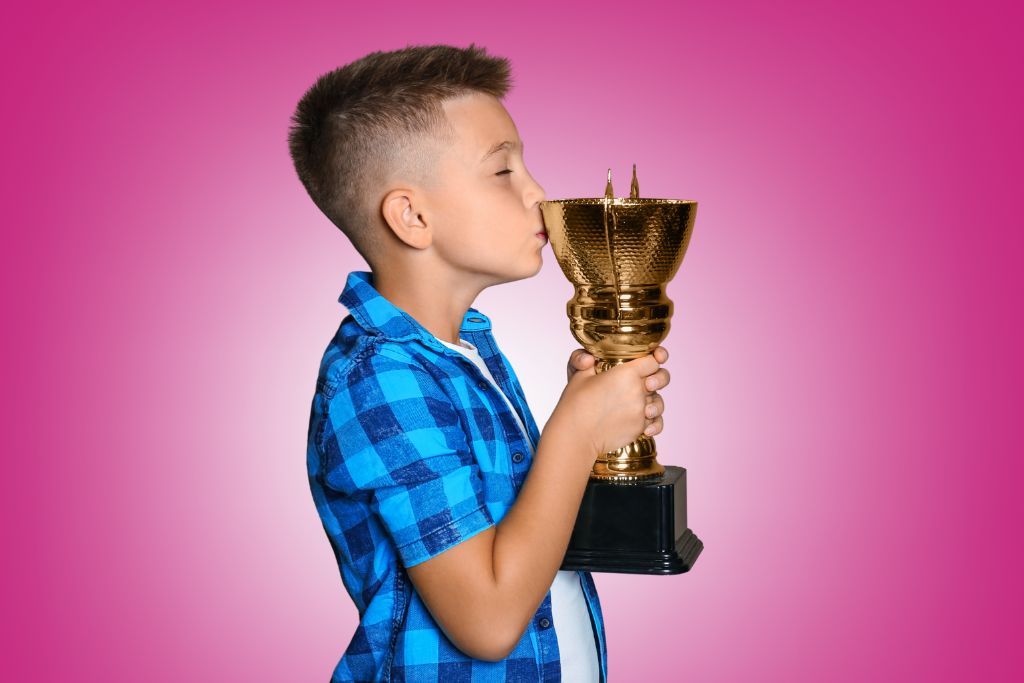When a child feels overwhelmed, their autonomic nervous system kicks into a stress response. Logic shuts down, emotional regulation goes offline, and no punishment in the world can teach better behavior in that moment.
That’s why we have to calm the brain first. When we do, co-regulation creates emotional resilience, nurtures healthy relationships, and supports lasting nervous system regulation—for our kids and for us.
In this episode, I share why nervous system co-regulation beats consequences every time and how you can begin using simple, practical strategies to help your child move from survival mode into a calmer, more regulated state.
Why don’t consequences work when my child is dysregulated?
When kids are in meltdown mode, their autonomic nervous system is in fight-flight-freeze. Logic and reasoning are shut down.
- Punishment adds shame and fear—which makes behavior worse, not better.
- A stressed brain can’t learn. The sympathetic nervous system is in survival mode.
- Regulation must come before correction. Calm brains are the only brains that can take feedback.
Behavior is communication. If your child is screaming, throwing things, or shutting down, it’s their nervous system saying, “I feel unsafe.”
How can I calm my child’s brain when they’re overwhelmed?
Co-regulation begins with your nervous system. You can’t expect a child to self-regulate if you’re dysregulated too.
- Anchor yourself first: use deep breaths, a soft tone, or grounding mantras.
- Offer presence over words. Sometimes just eye contact, gentle rhythm, or physical closeness (like deep pressure hugs) communicates safety.
- Avoid escalating threats. Instead of, “You’re losing your tablet all week,” try, “I see you’re overwhelmed. Let’s breathe together.”
- Use environmental signals. Soft voice, calm body language, and steady breathing send cues of safety to your child’s nervous system.
Co-regulating teaches children over time that they can move from dysregulation to calm with supportive relationships.
Want a calmer home in just one week? Try Quick Calm—your 7-day reset designed to help busy parents raise a more regulated child.
What does nervous system co-regulation look like in real life?
Parents often ask, “But what do I do when the meltdown starts?” Here’s what it looks like in daily life:
- Less talking, more being. Put down the lecture until your child reaches a regulated state.
- Mirror calm. Your facial expressions and body language send powerful signals through mirror neurons.
- Stay nearby. Instead of sending your child away (“Go calm down in your room”), model calm by staying present.
- Shift from red to yellow to green. Once they move out of the red zone of survival mode, you can use words to guide them back to balance.
These small but profound effects build emotional connection and nurturing relationships—the foundation for healthy child development.
You don’t have to figure this out alone.
Become a Dysregulation Insider VIP and get your FREE Regulation Rescue Kit: How to Stay Calm When Your Child Pushes Your Buttons and Stop Oppositional Behaviors.
Head to www.drroseann.com/newsletter and start your calm parenting journey today.
How can co-regulation help me as a parent too?
Regulation First Parenting isn’t just about your child. It supports your own emotional and physiological states and strengthens your capacity for stress management in daily life.
- Taking a few deep breaths lowers blood pressure, activates the parasympathetic nervous system, and helps you with self regulation—a crucial skill for both parenting and overall physical health.
- You also model resilience. When your child sees you pause instead of explode, they learn emotional resiliencethrough neural pathways, shaping healthier emotional responses and more balanced emotional states over time.
- It reduces burnout. You feel calmer, more confident, and less guilty—almost like creating a therapeutic setting in your home where healing and connection naturally unfold.
- Strengthens relationship dynamics. Co-regulation builds mutual understanding, not power struggles, and lays the groundwork for lifelong healthy relationships.
🗣️ “Calm has to come before connection, and connection has to come before correction.” – Dr. Roseann
When consequences keep backfiring, it’s not because your child is manipulative—it’s because their nervous system is overwhelmed. By shifting to Regulation First Parenting, you’ll create healthier relationships, emotional resilience, and a deep sense of safety in your home.
Feel like you’ve tried everything and still don’t have answers?
The Solution Matcher helps you find the best starting point based on your child’s symptoms, behaviors, and history.
It’s fast, free, and based on decades of clinical expertise.
Get your personalized plan now at www.drroseann.com/help
FAQs
How can I calm my child’s nervous system in the moment?
Start with co-regulation—your calm helps regulate them. Use a few deep breaths, soft tone, and presence. Less talking, more safety signals. Once they shift out of survival mode, they can hear you.
What should I do instead of timeouts or threats?
Focus on connection over correction. Stay nearby, regulate your own emotions, and offer safe, soothing cues like eye contact, gentle touch, or steady breathing. Once calm returns, guide your child with teaching—not punishment.
Why does my child seem fine at school but explode at home?
Many kids mask stress during the day. At home—where it feels safe—their sympathetic nervous system releases the pressure. This isn’t manipulation; it’s dysregulation. Behavior is communication. They need co-regulation, not bigger consequences.
How can co-regulation help me as a parent?
When you regulate first, you protect your own nervous system too. That calm energy shifts your child’s state, reduces power struggles, and builds emotional resilience for both of you. You’ll feel better—and your child will too.













